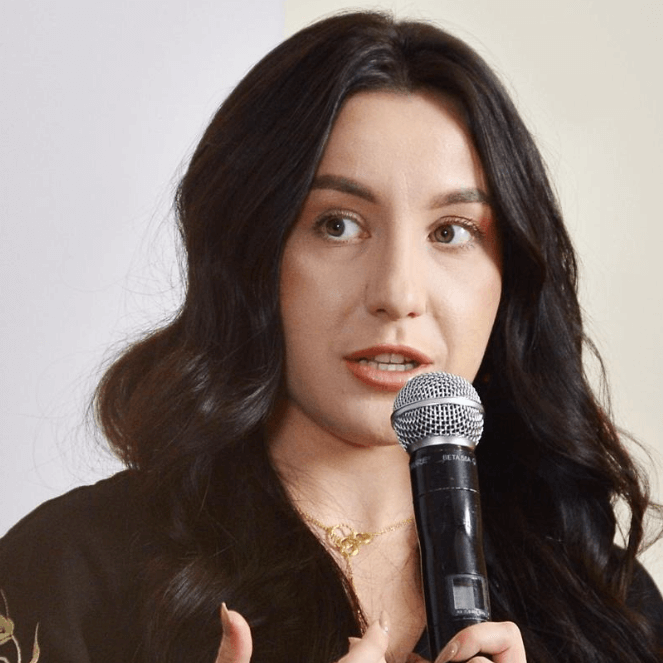‘Ukraine introduces fee-for-service healthcare“.”Ulyana Suprun brings in the American healthcare system”. “Ukraine needs medical insurance system”. “Western healthcare is for rich people only, whereas every citizen has access to Ukrainian healthcare”. These points are often used by local politicians who oppose medical reform in Ukraine.
Is Ukrainian healthcare funding system truly worse than the ones abroad? What sources for healthcare funding are there?
In this article we study healthcare funding systems in the U.S., Great Britain, France, Georgia and Ukraine, and analyze their effectiveness. Why did we choose these exact countries? Future Ukrainian healthcare is often compared to systems used by Americans, British and French, and Georgia is a fellow post-Soviet country often offered as an example for Ukraine.
Which countries spend money on healthcare
Regardless of the country, there are two types of healthcare funding systems: public and private. Public costs are taken out of country’s budget. Private costs include money citizens/employers spend on medical insurance, and medical fees paid “out of the pocket”. Let us stress it once more: out-of-pocket fees are included into the general indicator “private costs” (see the graphs).
Governmental and citizens healthcare costs in the U.S., Great Britain, France, Georgia and Ukraine per person (in U.S. dollars by purchasing power parity, 2016).
Government spending on healthcare per person (PPP)
Different healthcare funding sources costs distribution in the U.S., Great Britain, France, Georgia and Ukraine, 2016
Take notice: the graphs show private healthcare costs in two groups: “out of the patient’s pocket” and “individuals and legal entities medical insurance spending”.
The US has the highest governmental healthcare spending fraction – almost 40% of the general healthcare spending, despite the fact that private medical insurance is incredibly common in the US. These costs have risen recently, from 20%, after a warranty program and universal citizens insurance programs were introduced. We’ll describe those programs below.
Ukraine and Georgia have the highest percentage of out-of-pocket spending. Ukraine declares its medical services are free, but in reality in order to get help citizens need to cover more than half of the medical costs.
How do they do it? Examples of the healthcare funding systems
Great Britain
Most of medical services in Great Britain are free for the country’s residents and non-residents from European Economic area. Ukrainian Healthcare ministry tries to use British example in rebuilding its own healthcare system.
British citizens have their medical costs mostly covered by the National Healthcare System. Medical spending takes 18,9% of the British budget. For the non-residents and those who have no private medical insurance treatment will cost 150% from NHS rates. For unregistered migrants or visitors from out of Eurozone only emergency help and treatment of several infectious diseases are free.
There is no full governmentally defined list of medical services covered by the NHS, so they can vary. This list is created based on the periodically conducted cost-effectiveness analysis. In general NHS offers or covers the following services: screening, immunization and vaccination; ambulatory and stationary help, therapist help, necessary dentist services, some of the eyesight treatments, psychiatric help, disabled people treatment, palliative help, rehabilitation, including the physiotherapy (for example, stroke recovery and treatment).
NHS partially covers costs for dentistry, ophthalmology, travel vaccines and prescription drugs. The other part has to be paid by patients themselves. However, there are people who don’t have to pay even for the specialized services: children under 16 (under 18 for full-time university students), low-income families, pregnant women, people with certain chronic diseases, people over 60.
If a patient needs a lot of prescription drugs, he or she can buy a certificate for 3 or 12 months and receive the necessary prescriptions without any extra pay.
Private voluntary health insurance in Great Britain is an additional tool that allows to get medical help faster (free services often mean long lines in hospitals etc.) or to offset some of the costs of dentistry. It accounts for about 4.7% of general medical expenses.
The share of out-of-pocket payments for medical services in Great Britain account for 15% of all medical costs. Usually it’s payments for medical examination, health insurance or travel insurance.
USA
Although the state’s healthcare spending in the US is higher than in other countries (39.5% of the country’s total budget), 67.2% (as of 2017) of residents in the United States have private health insurance. For the rest of the population, the state finances basic treatment, usually for poorer citizens or vulnerable groups. In general, healthcare financing system in America is one of the most complex and confusing.
American state health insurance program includes:
- Medicare – a program covering some of the treatment costs and medicine for people over 65 or disabled people. It covers the costs for the hospital stay and treatment, hospices etc.
- Medicaid – a program covering the treatment costs for low-income citizens, disabled, and some other groups. Program covers the costs for the necessary and several additional healthcare services, for example, hospital stay and treatment, tests, x-ray, dentistry etc.
Neither of the programs cover 100% of healthcare costs. Patients still have to pay for the services programs failed to include. The only exception is children, people at the hospices and women included into the breast and cervical cancer programs.
There are also separate state insurance programs for children, special needs youth, military, veterans, state officials etc.
Until recently one of the main problems of American healthcare was the unavailability of healthcare services or access strictly to the cheap state hospitals for those without private medical insurance, low wage/lack of insurance options on the employer’s side. To make proper healthcare affordable for a larger amount of citizens, in 2014 the Affordable Care Act (widely known as Obamacare) was adopted. Obamacare controls the private healthcare funding (18,2% of general healthcare spending). Adoption of the Obamacare was followed by heated discussions, and there are factions in parliament that oppose this law.
Affordable Care Act prohibited yearly or lifelong limitations for medical insurance coverage, allowed to keep children on the insurance of their parents until the age of 26; had limited insurance price variation (previously they could have been influenced by the previous illnesses, records of abuse in the family, heritage, etc). Additional payment for the medical services for the patients with insurance were also limited (not all insurance schemes cover medical costs in full). The Act also obliged insurance companies to spend 80-85% of patients’ premiums on medical services, effectively limiting their ability to earn extra profits.
FInally, if a US citizen cannot get a private medical insurance and isn’t subject to a state insurance, he or she has to pay for the treatment out of their own pocket (11,1% of healthcare spending). Two options are available:
- The employer “puts aside” a portion of employee’s salary, which can be spent on healthcare only. We used air quotes because there is no separate account for this money, and the employee can ask the employer for reimbursement if his or her contract allows it. This money is not subject to taxation and interest. However, it “burns” in the end of each (such programs are called Flexible spending accounts)
- Employee puts aside a portion of employee’s salary to the separate bank account. However, an interest can be accrued on this account, and it lasts longer than a year. Such accounts are usually created for the employees whose own medical insurance doesn’t cover all the cost of treatment and patient has to pay extra. Usually it concerns people with chronic diseases not covered by the insurance. These programs are called Health savings accounts.
Obviously, paying for medical services in the US out of pocket is the least cost-effective method of financing for patients, because medical services are very expensive, and few people can afford to pay for them.
France
Healthcare system in France is another example Ukrainian politicians use. In fact its principles have a lot in common with the British model which Ukraine aspires to adopt. The difference lies only in the list of services financed by the state and services financed by the patient (through insurance or out of the pocket).
French government covers a portion of hospital care costs, private and state hospital treatment, outpatient treatment, obstetrics, diagnosis, ambulance, prescription drugs, prosthetics and other medical products. The state fully finances patient’s hospice stay, prolonged psychiatric treatment, chronic illnesses treatment, and also pregnancy-associated costs after the 5th month.
Prevention services are only partially covered by the state, but, for example, the costs of immunization, mammography and screening for colorectal cancer (one of the most common types of adult cancer) are fully funded by the state.
At the same time, state doesn’t cover the cost of vision care and dentistry.
Therefore, private health insurance in France (7.3% of medical expenses) is an additional tool for paying for health care services.
There is also the practice of paying for medical services of the pocket (9.8%). There are three possible options:
- co-payment – a fixed amount a patient has to pay for medical services in addition to costs covered by an insurance company or government. Simply put, a franchise. The Ukrainian Ministry of Health planned to introduce such a system, but Verkhovna Rada didn’t support the idea;
- co-insurance – a certain percentage of payments for medical services are distributed between the patient and the insurer (company or state);
- Extra charge for specialized medical services not covered by state or private insurance (“balance billing”).
Georgia
Georgia in terms of its socio-economic profile is quite similar to Ukraine. “Poverty remains one of the country’s major problems,” state Eric Richardson and Nino Berzuli in their report on the state of Georgia’s healthcare system. – <…> Despite economic growth since 1994, a large proportion of the population (20.6% as of 2016) is still living in relative poverty (below 60% of median consumption)”. Therefore, in this article we describe not only the current state of healthcare funding system in Georgia, but also its approaches to the reform.
Georgia’s economic changes were accompanied by several waves of healthcare reform.
After the collapse of the USSR Georgia inherited Semashko’s centralized healthcare model. Former Minister of Health Oleksandr Kvitashvili describes this system as follows: “…healthcare works according to a system invented by Soviet academician Mykola Semashko, when the state budget finances healthcare by the number of hospital beds and square meters of infrastructure, not by the quantity and quality of the services provided”.
Such systems means a waste of money. Quality of treatment leaves much to be desired, and even if not all beds are occupied, or doctors have not enough patients, these beds and doctors are still paid for by taxpayers.
From 1995 to 2004, the country had a social health insurance system. Due to chronic underfunding, it was difficult to call this system successful: access to quality public health services was limited.
During the reign of Michael Saakashvili (2004-2012), the Georgian system began to shift to market rails: a number of medical institutions were privatized and the system was built on the principles of a market economy and minimal state oversight. From 2008 to 2012, most of the medical budget expenditures were received by private insurance companies as part of the program to support those living below the poverty line. In 2010, the government suggested that insurers serve a wider range of patients – those living below the poverty line, children under 5, pensioners, teachers, students, and the disabled people. The insurance companies that won the competition received the monopoly right to serve these categories of citizens in 26 Georgia hospitals. In return, insurers had to invest into the modernization of hospitals and primary care facilities. As a result, large medical holdings consisting of insurance companies and medical infrastructure have emerged in Georgia.
In 2013, after the change of leadership in the country, the government switched to the state-funded healthcare for all segments of the population. The Universal Health Care Program (UHCP) is currently operating in Georgia and is funded by the country’s general government revenue. This way, the Georgian government sought to address the problem of public access to health care.
The government-sponsored package of services includes a number of primary and secondary services – including diagnostic services (with 20-30% co-payment from the patient), routine surgery, oncology services, obstetric care, some basic drugs and emergency care. The government is still focusing on the more vulnerable sections of the population: there is a program in place for poor households, retirees and children between the ages of 0 and 5, which covers almost everything.
Just as in Ukraine on the primary level, public health funding in Georgia operates on the principle of “money goes after the patient”. The Social Services Agency pays for the treatment of a patient insured in the state system. The patient chooses which hospital to consult.
All these changes and reforms, however, did not solve one of the important problems of Georgia’s health care system: the country’s population still pays a huge share of all out-of-pocket medical expenses: 55.6% and another 5.6% on insurance purchases. The money from patients’ pocket is mostly used for medicine, because the Georgian government reimburses the cost of 4 drugs for the main types of diseases (cardiovascular disease, diabetes, thyroid disease and chronic diseases) and only for the poorest people.
Ukraine
Ukraine, like Georgia, inherited the Semashko system from the USSR. It has not yet been able to reform this system completely, so the state should continue to provide fully free medical care to Ukrainians. But in reality, Ukraine is unable to do so. In fact, the population is forced to pay for medical services at their own expense: the payment for medical services by citizens exceeds 50% of health care expenditures, with the share of insurers close to zero.
As noted by Chimiao Fan, Director of the World Bank for Ukraine, Belarus and Moldova, as of 2015, the following changes in the medical sphere of Ukraine were urgently needed: provision of free assistance, including medicines to those most in need; effective treatment of important diseases (e.g., tuberculosis); more efficient allocation of resources in the medical field and the transition to the principle of “money goes after the patient”; restructuring and consolidation of the health care system, as not all of them are needed; increasing transparency in the procurement of medicines and medical services, etc.
To address these issues, a medical reform has begun in Ukraine. The main changes in the financing of medicine are as follows:
- The National Health Service of Ukraine was established. It has a lot in common with the public health insurance programs of Great Britain, France and Georgia. The NHSU concludes contracts with medical institutions – so far only on the primary level – and they receive budgetary funds for the services provided to patients, rather than for the number of beds and full-time employees. In other words, money goes after the patient;
- The state funds the primary care services. From 2020, the state-guaranteed healthcare package will be determined on the basis of health priorities in Ukraine, taking into account the state budget possibilities. The medical guarantee program will include a fairly wide range of outpatient and inpatient care, as well as medicines. These services will be fully paid for by the National Health Service of Ukraine. A specific list of medical services will be formed annually. Emergency, primary, outpatient, hospital and palliative care services will be funded by the state under the medical guarantee program. Patients will have to pay for services such as emergency dentistry, visitl to a doctor without referral, aesthetic medicine, etc.;
- Changes in the procurement of medicines. For each drug and medical device currently in the list of centralized purchases, the most optimal route of delivery to the patient is selected: through cost reimbursement programs, inclusion in the cost of medical services or centralized purchases by certain international organizations or a state-owned enterprise “Medical Procurement of Ukraine”;
- The introduction of the Affordable Medicine program. Patients with cardiovascular diseases, bronchial asthma and type II diabetes can receive certain drugs with full or partial compensation in pharmacies that have joined this program;
- Within the framework of decentralization at national level, a health guarantee program will be funded, while local budgets will be used to support the operation of the system and the implementation of local health programs.
Conclusion. The experience of other countries shows that most of them are constantly improving their healthcare funding systems. The greatest challenges these countries face are the aging of the population and the emergence of the expensive treatments that increase the healthcare funding needs. At the same time, the developed countries are paying more attention to disease prevention, the most effective method of maintaining the health of citizens.
Appendix
Healthcare spending: who, how and how much? The experience of the US, France, Great Britain, Georgia and Ukraine (2016)
| The US | France | The UK | Georgia | Ukraine | |
| GDP per person (by purchasing power parity, PPP), $ | 57904 | 41942 | 42977 | 9993 | 8289 |
| State healthcare costs per person (by PPP), $ | 8077,9 | 3964,3 | 3351,7 | 291,4 | 226,6 |
| State (budget) healthcare costs, % to all healthcare spending | 81,8 | 82,9 | 80,2 | 36,6 | 42,4 |
| Private medical insurance costs, per person (by PPP), $ | 697,6 | 351,4 | 194,1 | 44,6 | 12,9 |
| Private medical insurance costs, % to all healthcare spending | 7,1 | 7,3 | 4,7 | 5,6 | 2,5 |
| Out-of-pocket costs per person (by PPP), $ | 1094,2 | 466,6 | 631,6 | 443,2 | 290,3 |
| Out-of-pocket costs, % to all healthcare spending | 11,1 | 9,8 | 15,1 | 55,6 | 54,3 |
Source: The World Bank data, 2016
Attention
The author doesn`t work for, consult to, own shares in or receive funding from any company or organization that would benefit from this article, and have no relevant affiliations




